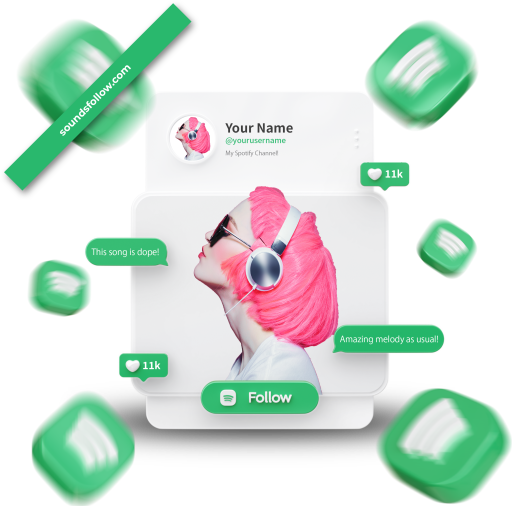If you’re a marketer or if you’ve been exposed to the business industry, most probably than not, you’ve heard about the terms “outbound marketing and “inbound marketing.” You might be thinking that these terms are just another set of jargon words that marketers use in order to sound cool.
While it is indeed true that seeing the label “Inbound Marketer” on one’s name card seems cooler than with having “Normal Marketer”, the real question here is what are these two marketing terms and how do they work in today’s competitive digital marketing generation?
What is Outbound Marketing?
In a nutshell, Outbound Marketing or the “traditional advertising methods” essentially occurs when you are the one who’s reaching out to the customer, instead of the customers coming to your business for the products and services that you offer. This type of marketing strategy is often referred to as “push” or “interruption” marketing, as it involves seeking potential customers in hopes to make a sale.
“In the rise of technology, outbound tactics of marketing are becoming less and less profitable.”
The prevalent reason for this is because marketing strategies evolve as digital marketing emerges. What used to work in the past decades won’t always work in the present. Furthermore, this strategy is a one-way conversation, where the focus lies on the reason why the audience should buy the products or services that you offer. In other words, your message should be as general as possible in order to resonate to a wider range of audience.
Another reason why many marketers already view this tactic as ineffective is because of the fact that people no longer pay attention to ads, as they get so saturated and similar with each other. In addition, the advancement of technologies has allowed people to escape or completely avoid these interrupting ads.
Uses of Outbound Marketing
- Direct mails
- Yellow pages
- Telemarketing
- Email sales letters
- Outdoor billboards
- TV advertisements
- Print advertisements
- Radio advertisements
- Online banner advertisements
Despite the great advancement in the digital marketing industry, some companies work just fine with the traditional outbound strategy of marketing, as it feels more welcoming and familiar to them. As a matter of fact, according to a study conducted by the DataBox, cold emails still work today–with over 35% of sales from it.
This strategy can also be used if your business is a new industry player, which means people are not yet familiar with your brand. Through push marketing, you will be able to raise your overall brand awareness and get more potential customers to get curious about your product and service offerings.
What is Inbound Marketing?
Inbound Marketing is referred to as “magnetic” as it attracts target prospects. Hence, its main priority is to pull audience to them, instead of pushing out general messages to the public. This strategy simply works by attracting prospects who are on the hunt for products or services that can bring solution for their problems.
When implementing this type of approach, marketers usually develop this content to connect with the buyers’ specific points in their journey
- at the start of the buyers’ journey, they are familiarizing themselves with the problem and the possible solutions;
- halfway in their journey, they will start to compare the possible solutions;
- and lastly, at the end of their journey they will be having to make a one final decision.
“People are more engaged with relevant contents that they find as they do their research, rather than being pushed to a specific message.”
Here are the few elements of Inbound Approach in Marketing:
#1 Search Engine Optimization (SEO) – SEO is the one responsible in making your website more attractive to prospects by boosting your chances of being in the top list for keyword searches.
#2 Content Creation – the simplest form of content comes in the forms of blog posts and website pages. The primary use of content creation is for people to visit your site more often for the valuable information they could get, which will help them solve their prevailing problem.
#3 Calls-to-action – this involves enticing your content readers to act in some kind of way. This could either be giving their email in exchange for a PDF version of an ebook, or it can be a call to make a purchase for a discount offer. Basically, its goal is to convince your prospects to respond to your offer,
#4 Social Media – incorporating social media platforms are one of the best ways to engage your readers with your content. Moreover, these platforms allows you to reach a wider range of people, and even have your product or service offerings go viral.
#5 Emails – email marketing are still widely used as an effective tool to build a long-term and profitable relationship with those people who show interest in your product and service offerings. You can achieve this by simply sending out an email newsletter that contains various deals and offerings for your brand’s products and services.
Uses of Inbound Marketing
The heart of this strategy are:
- blog content
- search engines
- customer referrals
- downloadable content
Overall, any type of business will benefit with these marketing strategies. However, there are the top three industries that are well-suited for this type of marketing strategy are the media industry, recruiting industry and lastly, the professional services industry (services of accountants, consultants and lawyers).
Pros & Cons
Outbound Marketing pros:
The most prevalent benefit of using this approach is to reach a wider range of audience. This could be a great start-up for new market entrants for brand awareness and to make your target audience know about your product and service offerings. This can also be useful if your product or service offerings fit for the mass public, which means that your message would resonate with most audience and would find them enticing.
Outbound Marketing cons:
There are a handful of demerits that harbors this type of marketing strategy. Firstly, with the rise of digital marketing and online streaming sites, more and more people are shifting from these sites instead of the traditional TVs, which means TV ads don’t get much viewers anymore. The same goes with print and radio advertising. As digital marketing evolves, traditional strategies are now viewed as costly and inefficient.
Don’t get me wrong, these techniques used to be effective. But nowadays, people pay less and less attention to these schemes. By implementing these tactics, you may risk your brand image without making any leads. Also, this strategy is a one-way conversation, where the focus lies on the reason why the audience should buy the products or services that you offer. In other words, your message should be as general as possible in order to resonate to a wider range of audience. Hence, won’t be leading to a long-term and profitable customer relationship.
Inbound Marketing pros:
The overall ROI (return of investment) is greater than what you’ll get with the traditional push marketing, since you’re not risking your brand image by annoying your audience with constant interruptions. This non-invasive form of digital marketing strategy allows potential customers to go through your products and service offerings with no pressure.
Moreover, since this type of strategy involves a two-way communication, you are more likely to build profitable and long-term relationship with your potential clients as you slowly build their trust and loyalty. This new way of marketing either educates or provides entertainment to your audience. Thus, creating more value.
Inbound Marketing cons:
One undeniable demerit of this approach is the fact that it can get too time consuming. Creating an interesting and relevant content takes a lot of energy, time and creativity juices. A business or a company has to be consistent in making this entire process happen in order to be successful.
Another con that you have to consider when using this approach is the difficulty of tracking your ROI. In other words, it is the difficulty of monetizing the value of the audience engagement you receive in your blog posts and contents. And lastly, this approach along with the traditional one are costly. Although this approach is a little less expensive than the push marketing one.
Using Outbound Marketing & Inbound Marketing Together
We’re living in a competitive business industry, where everyone uses various ways in order to climb up the corporate ladder. One thing you can do in order to get ahead of your industry competitors is by utilizing both Outbound Marketing and Inbound Marketing altogether. Not only does it compliment each other, it also allows you to have immediate and long-term results for your business.
- Generate audience traffic through the use of the traditional outbound approach
- Yield higher leads using inbound approach
“Why limit your business to either outbound or inbound marketing, when you can use them both for the benefit of your business?”
In Conclusion
At the end of the day, the best marketing approach is the one that truly works for your business and market offerings. However, regardless of the type of business and industry you’re in, it is important to try new things out, whilst continuing the traditional methods that works. Remember that some techniques that worked for the last decade, may not work this time. People tend to get sick and tired if the content gets too saturated, so it is very important to find new ways and get your creative juice flowing.






